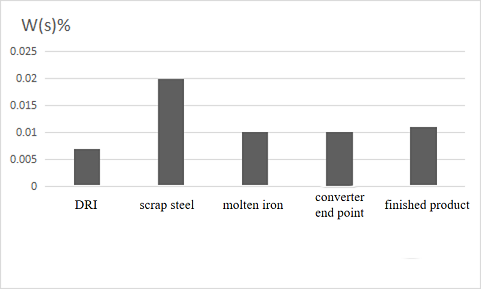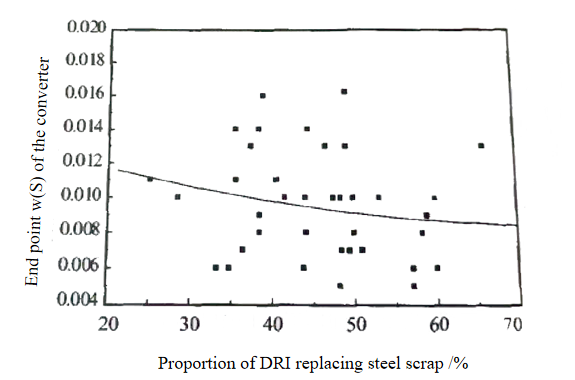Domestic converter DRI application experience
Let us illustrate with the use of sponge iron imported by domestic steel mills in the fourth quarter of 2021, as shown in Table 1:
Table 1 Usage of imported sponge iron in iron and steel enterprises

It can be seen from Table 1 that the HBI imported in the current season is all used in converter production, and the main charge for the Basic Oxygen Furnace (BOF) is molten pig iron from the blast furnace, commonly referred to as "hot metal" (HM). In addition to iron, blast furnace hot metal contains a certain amount of oxidizable elements, such as carbon, silicon, manganese, and phosphorus. The heat of reaction of these element with oxygen injected into that BOF exceed the amount required to raise the molten steel to the proper tapping temperature, and coolant is added to the furnace to avoid overheating. Technically speaking, BOF can accept a great deal of coolants. Scrap steel, iron ore or a mixture of the two are the most commonly used coolants.
Low-sulfur DRI is used as the main coolant in combination with low-sulfur molten iron to promote the production of low-sulfur steel, such as ultra-deep drawing steel, high silicon electrical steel, bearing steel, etc. Ultra-low sulfur steel grades (up to 0.5%) can be produced by using desulphurized hot metal and appropriate DRI as coolant. The desulfurization effect of converter steelmaking is limited because the oxidizing environment in the converter makes the distribution coefficient of sulfur very low. The w(S) of DRI is low, with an average of 0.008%, which is lower than that of special low-sulfur steel scrap (w(S)<0.020%), so direct reduced iron can be conveniently used in the production of low-sulfur steel. The converter raw materials and molten steel w (S) are shown in Fig. 1. In actual production, due to the shortage of special low-sulfur steel scrap in the production of low-sulfur steel, direct reduced iron is used to replace part of the special steel scrap in the converter.

Fig1. The converter raw materials and molten steel w (S)
In actual production, when produce low sulfur grade steel, due to that shortage of low sulfur special scrap steel, direct reduced iron is use for replacing part of the special scrap steel in the converter. The end point of the converter and the finished product have low sulfur content, which can meet the requirements of low sulfur content of various steels.
The relationship between the proportion of DRI instead of scrap steel and the sulfur content at the end of converter is shown in Figure 2. It can be seen from the figure that the end-point sulfur content of converter decreases with the increase of the proportion of DRI replacing scrap steel.

Figure 2 The relationship between the ratio of DRI replacing steel scrap and the end point w(S) of the converter
The ratio of scrap steel to molten iron in converter production is generally about 1:4, and the ratio of scrap steel replaced by sponge iron is generally 30~50%, which accounts for 5~10% of the furnace charge. The general method of adding direct reduced iron is to put it into the scrap steel trough together with the scrap steel, and add it into the furnace together. During the smelting process, the position of the gun is adjusted according to the condition of the converter, the amount of lime is adjusted according to the amount of direct reduced iron added, and the rest are the same as during normal production.
The carbon content of electric furnace (that is, the amount of molten iron and pig iron) determines the recovery rate of hot briquettes. With a higher carbon content, the iron oxide in the middle of the hot briquette is more likely to be reduced into the molten pool, and the recovery rate of the hot briquette is at the upper limit, and vice versa.




